
Harvard GSD Early Design Education Program Comparison
This quick visual comparison across the five Harvard Graduate School of Design (GSD) Early Design Education (EDE) programs was developed to help distinguish one from another. Please read below for details about how these visual diagrams work and what information you will find. We invite you to direct any questions you may have to [email protected].
Compared to similar summer design programs, Harvard GSD Design Discovery programs…
| …offer engagement with not only Architecture, but Landscape Architecture and Urban Planning + Design also. |
| …invite all who are 18 years old all the way up to mid-career professionals, not only those already studying design. No design experience is required to join us. |
| …are less expensive than other summer programs. Scholarships and financial aid are available. |
| …are a shorter duration than other summer programs. Design Discovery fits well into any summer plans and we offer both virtual and in-person formats. |





Harvard GSD EDE Program Comparison
Harvard GSD Design Discovery Virtual
- 3 weeks, virtual format
- U.S. and international audience ages 18 to mid-career professionals
- Introduction to design across all three disciplines: Architecture, Landscape Architecture, and Urban Planning + Design
- Digital media focus for drawing and modeling
- Instruction by Harvard GSD faculty and advanced GSD masters and doctoral students
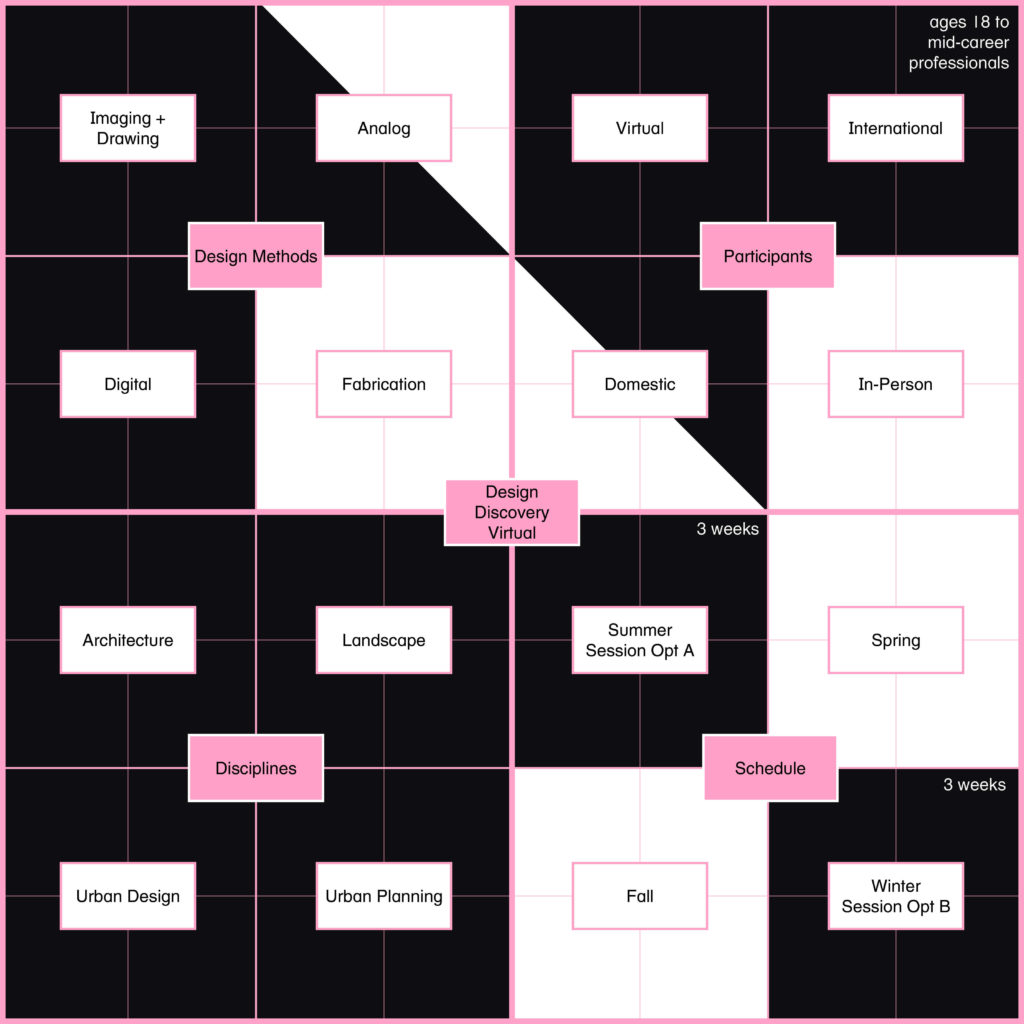
Harvard GSD Design Discovery
- 3 weeks, in person format in Cambridge, MA
- Audience ages 18 to mid-career professionals
- Introduction to single selected design discipline of focus: Architecture, or Landscape, or Urban Planning and Design
- Fabrication and physical model making focus
- Instruction by Harvard GSD faculty and advanced GSD masters and doctoral students
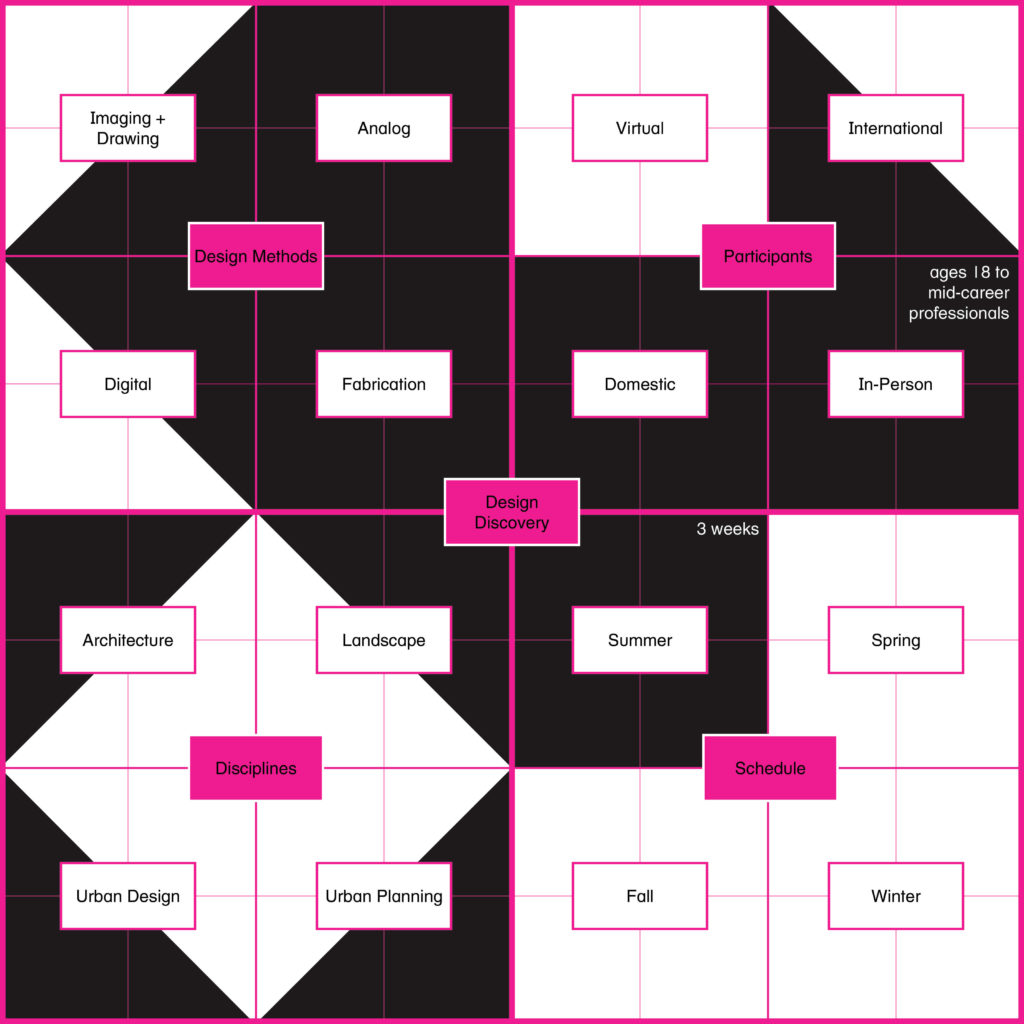
Harvard GSD Design Discovery Youth
- 3 weeks, in person format in Cambridge, MA
- High School audience, ages rising sophomores to seniors from Boston area
- Introduction to design and its potentials to impact the world
- Instruction by Harvard GSD faculty and advanced GSD masters students

Equity in Design Mentorship
- 10 week program, alternating between virtual learning sessions and in person events in Boston area
- Diverse Boston high school students
- Instruction and mentorship by Harvard GSD students and Perkins&Will design professionals

Harvard Undergraduate Architecture Studies
- 4 year non-professional track of study within the A.B. degree of History of Art and Architecture at Harvard College
- International audience of diverse Harvard College students, ages 18-22
- Instruction in thinking through making by Harvard GSD faculty and advanced masters and doctoral GSD students in relation to liberal arts context of Harvard College
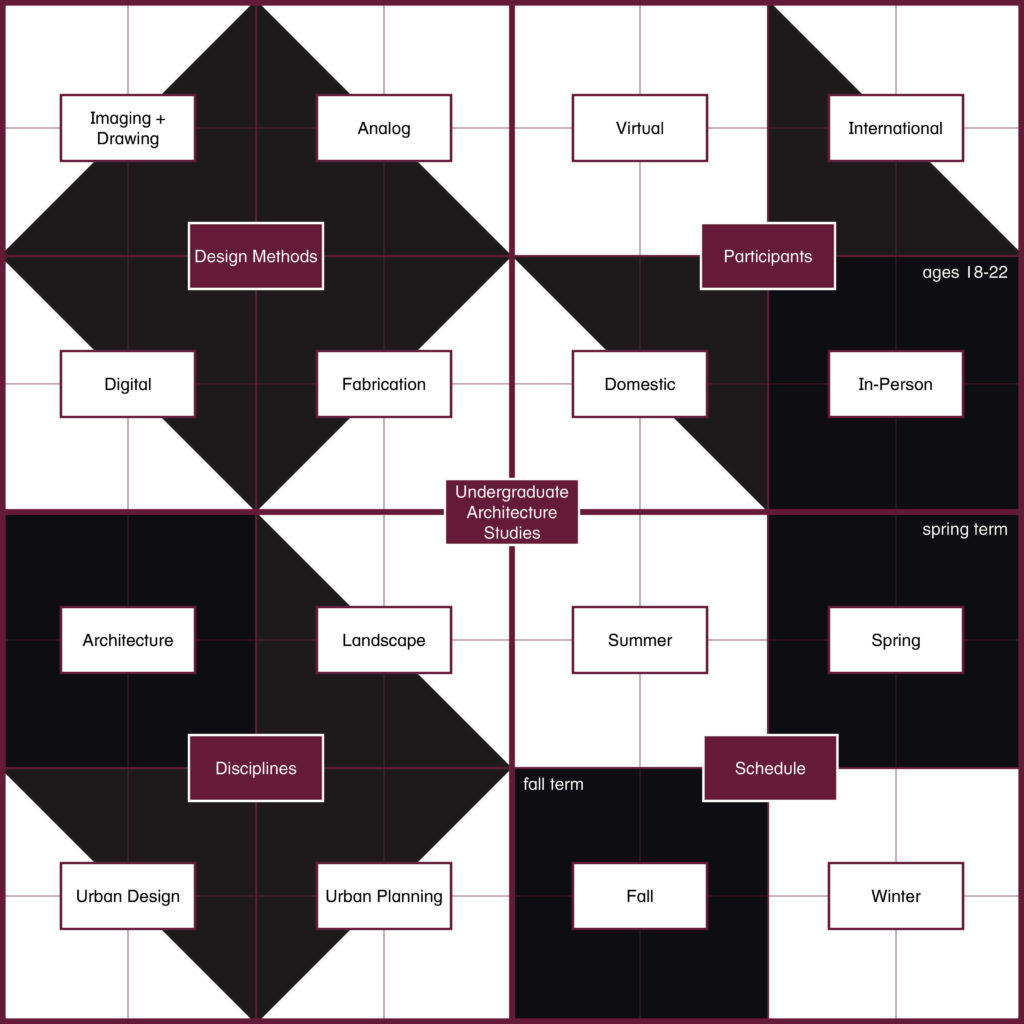


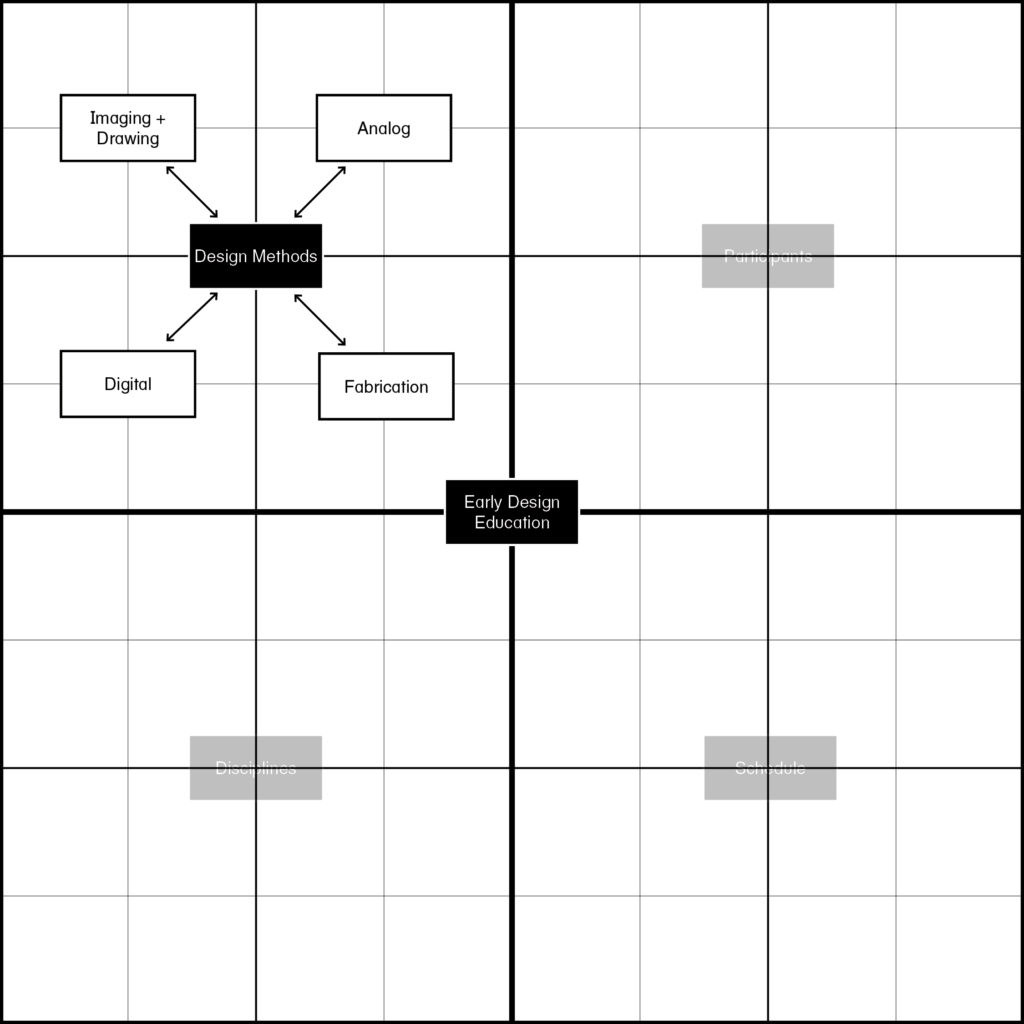
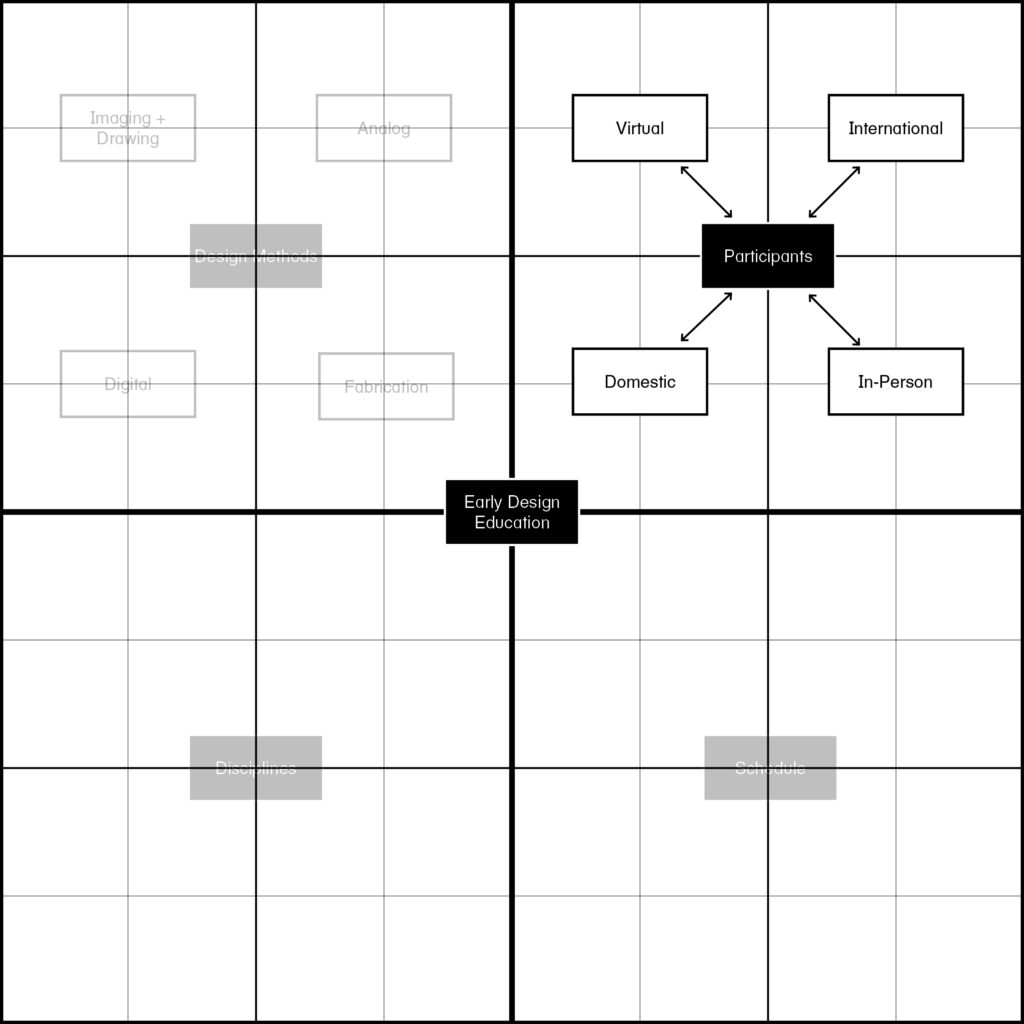
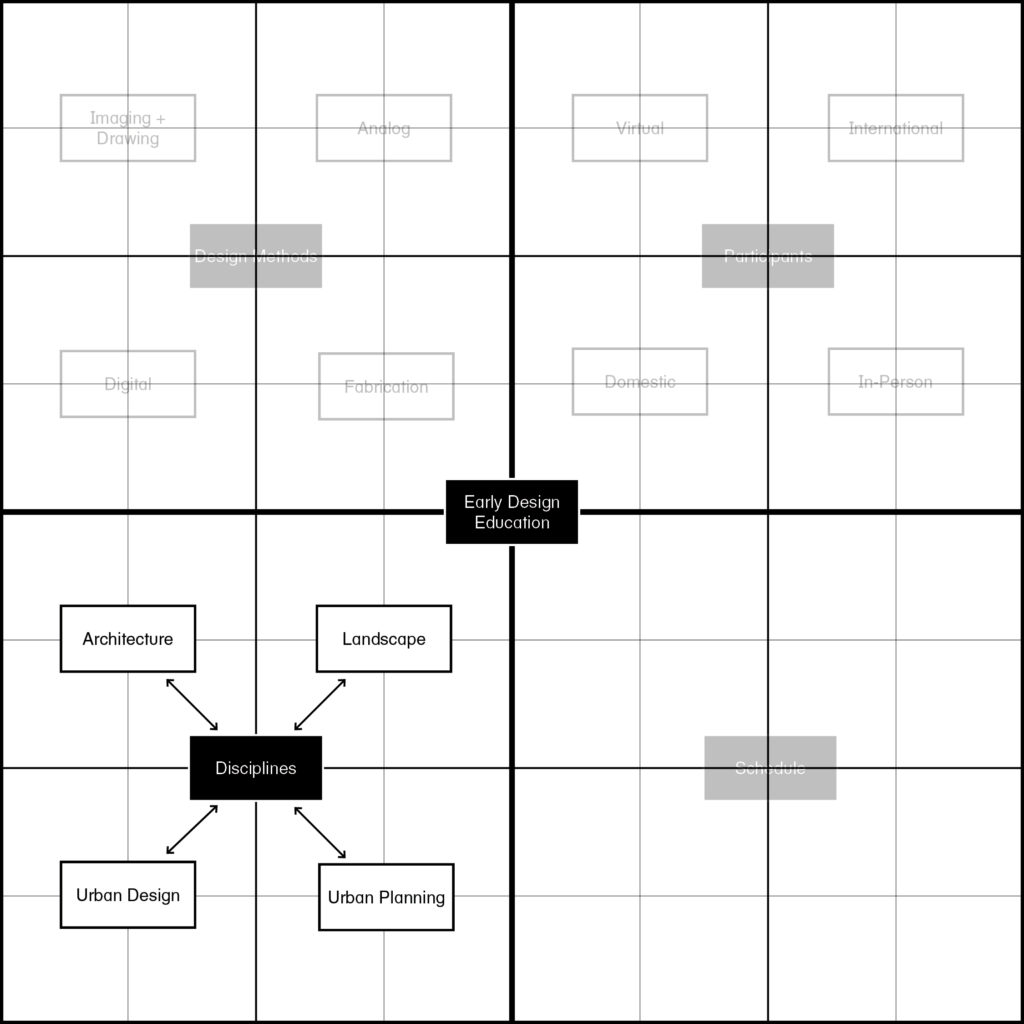
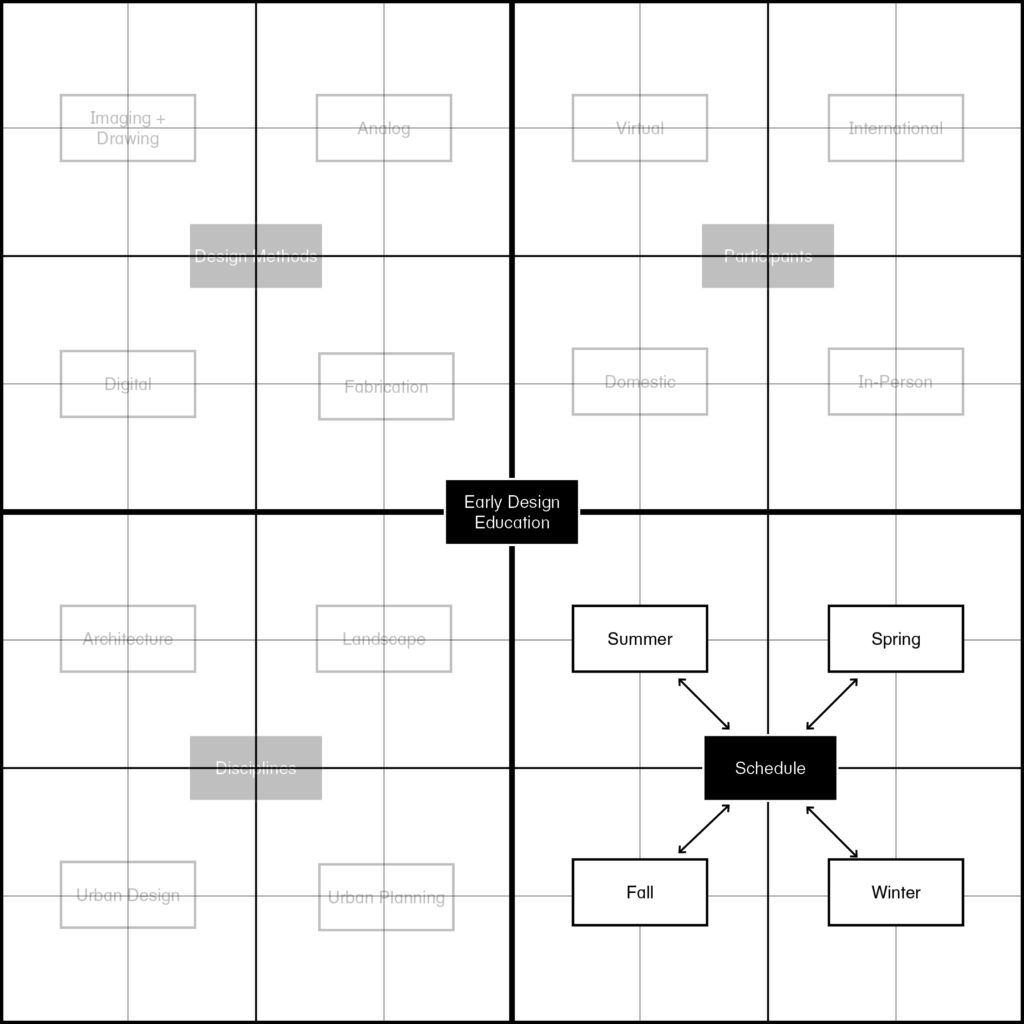
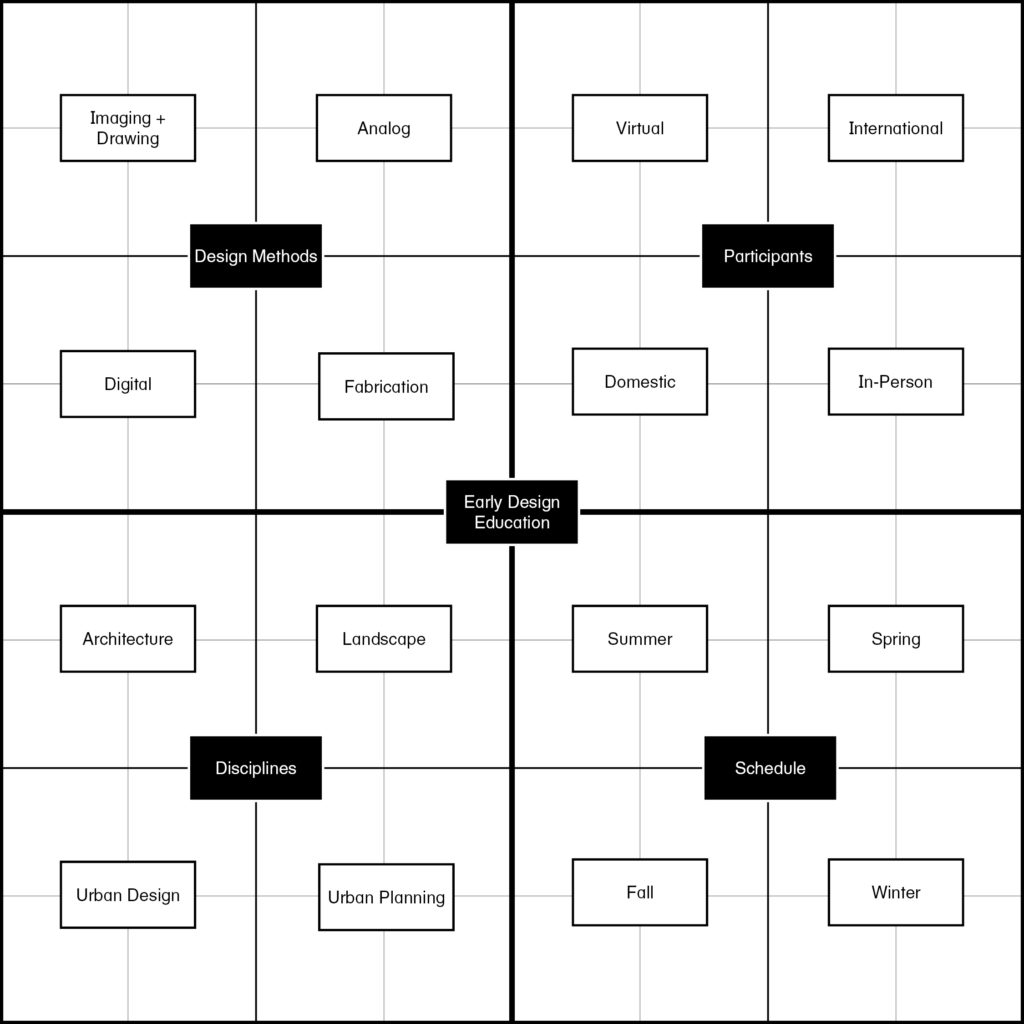

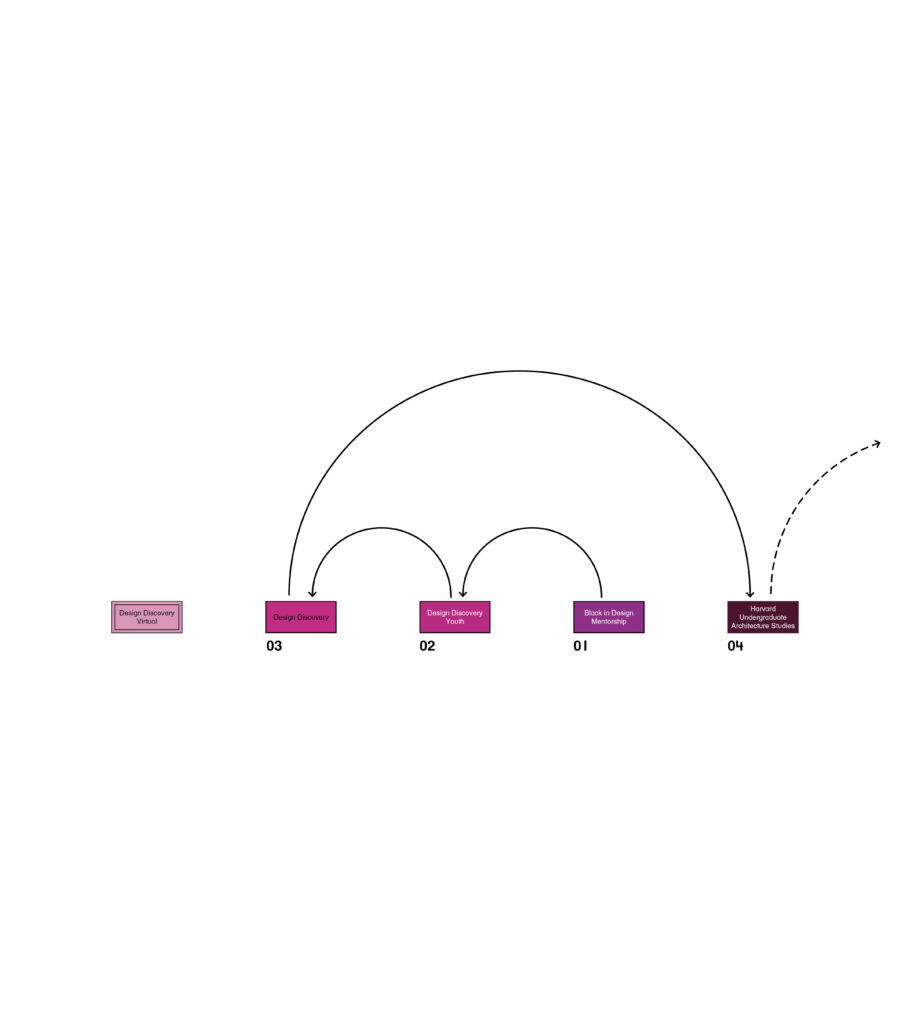
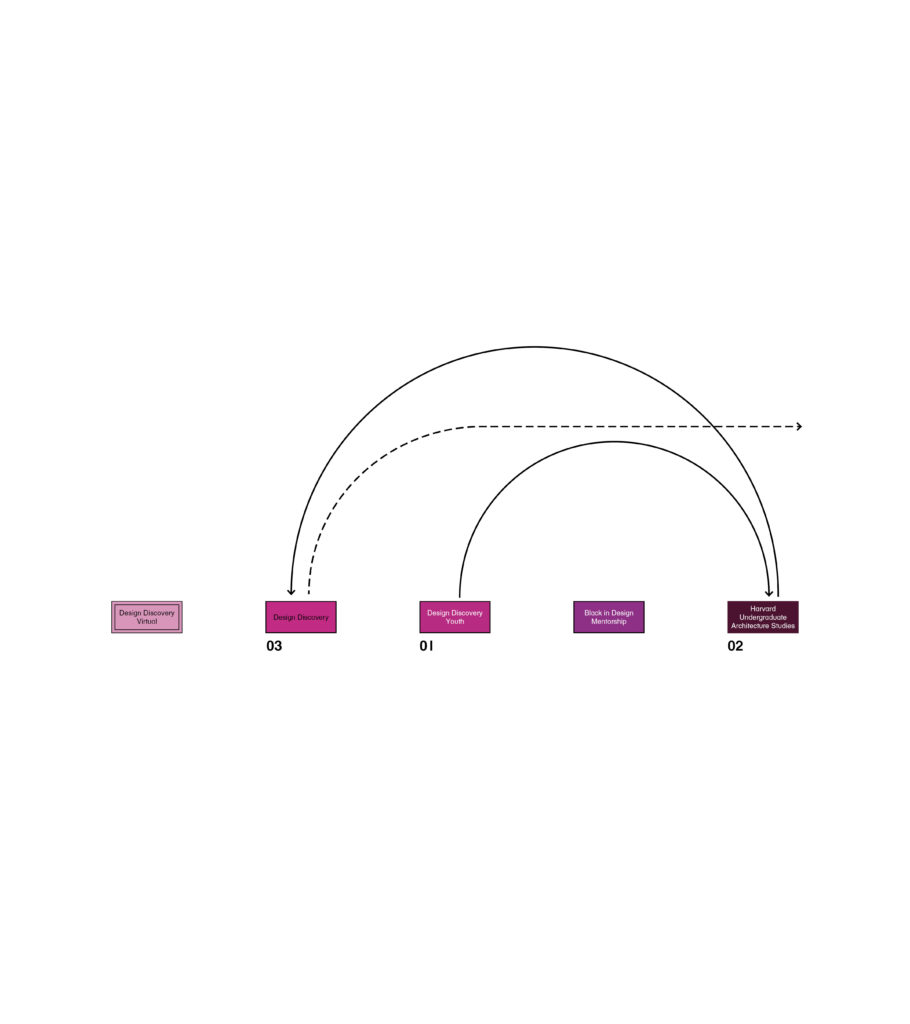

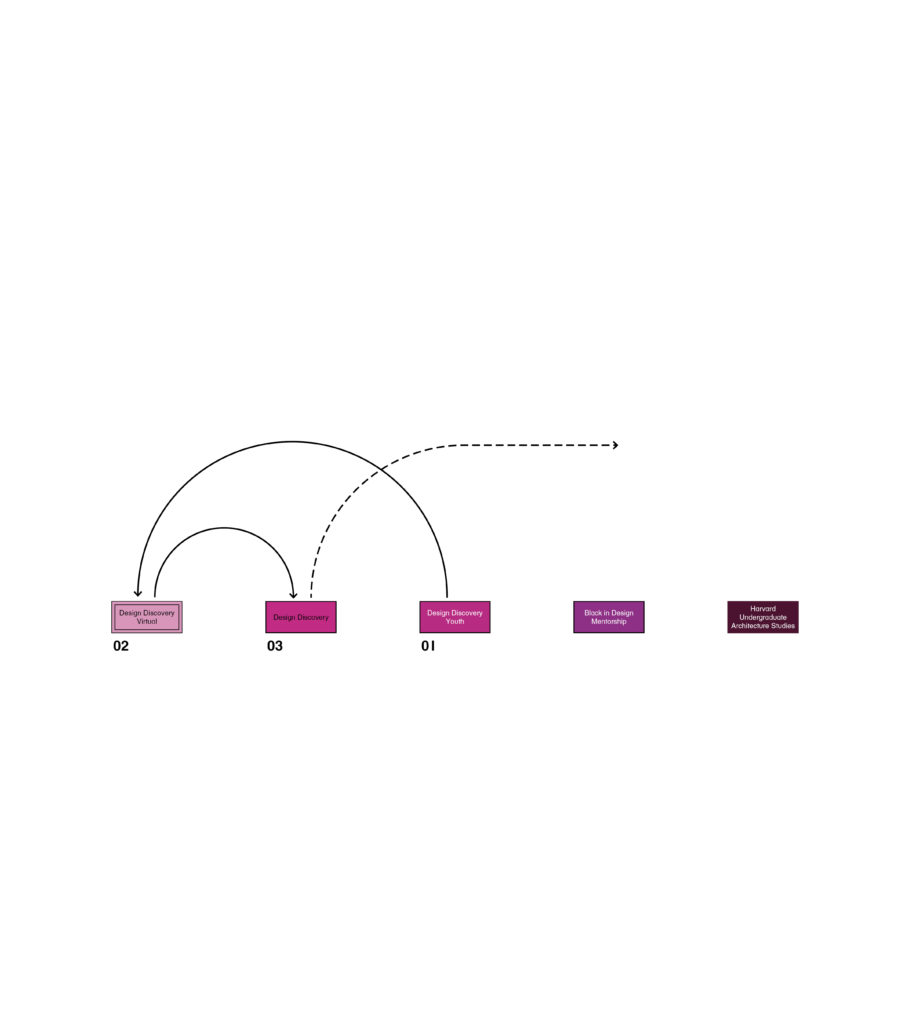
Click all images here to enlarge for more info. Still have questions? Contact us here!
